





| Tipula (Savtshenkia) pagana (Meigen, 1818) |






|
|
Scientific name: Tipula (Savtshenkia) pagana (Meigen, 1818) Common name: French name: Order: Diptera Family: Tipulidae Wingspan : Body size: 10 to 12 mm; Wing length: 11 to 16 mm for males, 4 to 5 mm for most of the females. Biotope: Forests, grasslands. Geographic area: Europe. Observation period : In Autumn. |
Tipulidae, also called Crane Flies, are remarkable by their very long and fragile legs which can easily detach from the body. You can recognize the members of the Tipulidae family by the V-shape suture of the mesonotum, on the upper side of the thorax between the base of the wings, by their long snout and by they wing veins with two anal veins reaching the edge of the wing. The Crane flies of the Tipula genus are characterized by the sub-costal vein joining the radial vein (Tipulinae family), by the presence of a discal cell, by long legs and by thread-like antennae with 13 articles. Identification of the Crane flies of the Savtshenkia subgenus is generally done by an exam of the genitalia. Species observed in France in autumn show nebulous and irregularly spotted wings (no darker spots along the costal edge nor transverse or longitudinal bands). The mesonotum, on the upper side of the thorax, bears four uniform dark stripes, that's to say not outlined with a darker colour. The R2 vein is complete and reaches the costal vein. The two first articles of the antennae, scape and pedicel, are generally yellow, the following ones are darker. I have no precise information to identify male Tipula pagana on pictures. Most of the females are brachypterous and not able to fly. They show very reduced wings. The main possible confusion is with Tipula gimmerthali which is a species with a much more northern range. Tipula pagana shows a rather short tergite 10. It is much longer on Tipula gimmerthali. |
| [To know more about the Tipula (Savtshenkia) pagana] [Next picture] [Top] |
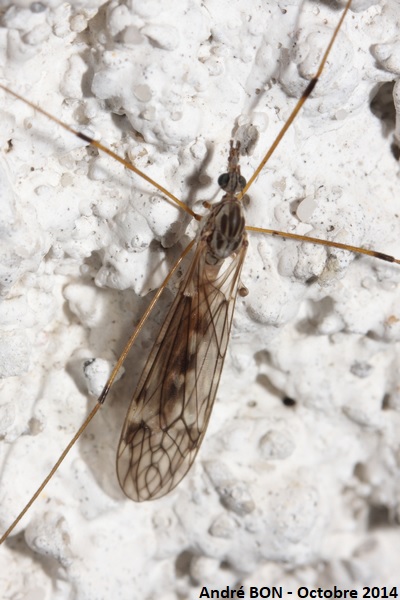
|
Autumnal crane fly with spotted wings and showing 4 uniform dark stripe on the mesonotum, this is one member of the Savtshenkia subgenus. |
| [To know more about the Tipula (Savtshenkia) pagana] [Next picture] [Previous picture] [Top] |
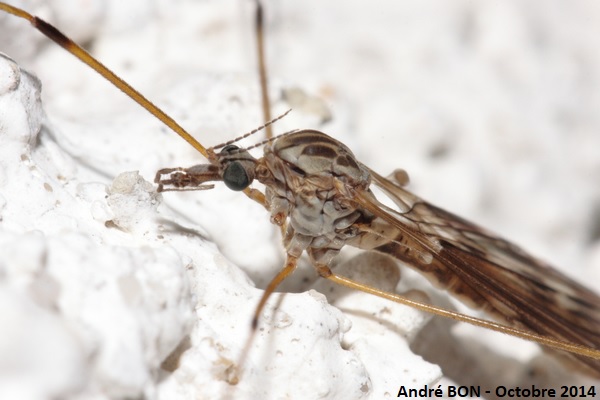
|
Side view. I was trying to see an eventual straight dark stripe typical of Tipula rufina. There is no such stripe so we will only list this one as belonging to the subgenus. For information, I have observed, about at the same place, one female Tipula pagana 11 days after having shot this picture. |
| [To know more about the Tipula (Savtshenkia) pagana] [Next picture] [Previous picture] [Top] |
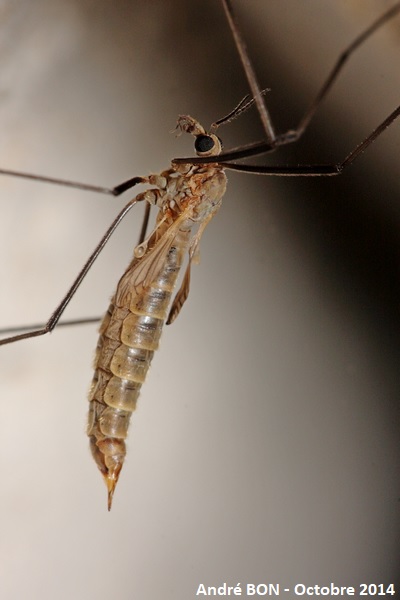
|
The reduced wings and the rather short tergite 10 indicate Tipula (Savtshenkia) pagana for this female crane fly. |
| [To know more about the Tipula (Savtshenkia) pagana] [Next picture] [Previous picture] [Top] |

|
I was able to make measurements on this specimen by photographing it next to a graduated ruler. I found 13 mm for the body size and 4 mm for the wing length. |
| [To know more about the Tipula (Savtshenkia) pagana] [Next picture] [Previous picture] [Top] |
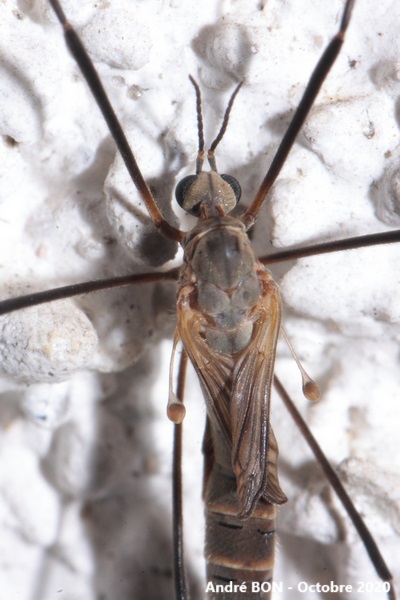
|
Close-up of the wings. |
| [To know more about the Tipula (Savtshenkia) pagana] [Previous picture] [Top] |
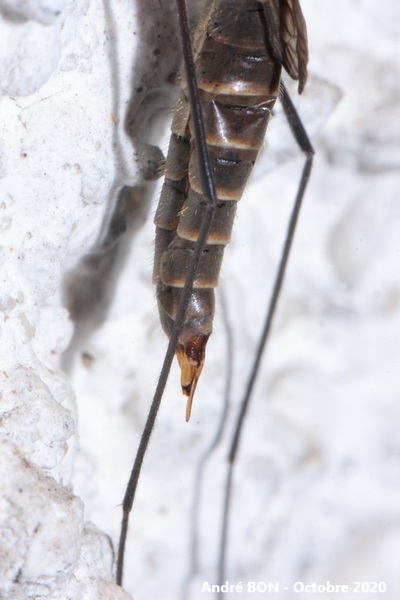
|
Close-up of the tip of the abdomen. |